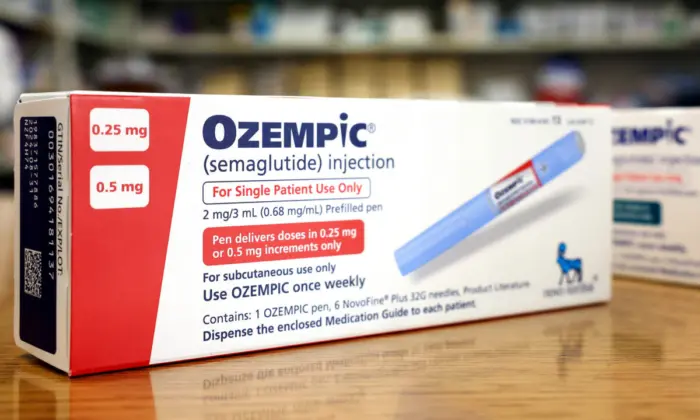It costs Novo Nordisk less than $5 per month to produce its top-selling diabetes injection, Ozempic, even as it charges nearly $1,000 for a month’s supply before insurance, according to a new study.
Those medicines work by mimicking a hormone called glucagon-like peptide-1 (GLP-1), which stimulates the pancreas to release insulin when blood sugar rises too high, slows down the emptying of the stomach, and targets brain receptors involved in reducing appetite. Over the past year, demand for GLP-1 agonists has exploded despite soaring costs and limited insurance coverage.
For their study, researchers at Yale University, King’s College Hospital in London, and the nonprofit Doctors Without Borders looked at the cost of manufacturing insulin and compared it with that of GLP-1 agonists. They estimated those prices by combining manufacturing costs for the weekly injection with costs of formulation and other operating expenses, plus a profit margin with an allowance for tax.
The foundational price for a weekly dose of injectable semaglutide—the generic name for Ozempic—ranges from $0.89 to $4.73 per month, the study found. By contrast, a vial of human insulin can be manufactured at a cost between $2.37 and $5.94 per month.
Wednesday’s study concluded that GLP-1s “can likely be manufactured for prices far below current prices, enabling wider access.”
“High prices limit access to newer diabetes medicines in many countries,” the researchers wrote. “The findings of this study suggest that robust generic and bio-similar competition could reduce prices to more affordable levels and enable expansion of diabetes treatment globally.”
Citing the findings, Sen. Bernie Sanders (I-Vt.) called on Novo to slash prices for both Ozempic and Wegovy, highlighting the price gap for the identical drugs sold in America and other developed countries.
“A new Yale study found that Ozempic costs less than $5 a month to manufacture. And yet, Novo Nordisk charges Americans nearly $1,000 a month for this drug, while the same exact product can be purchased for just $155 a month in Canada and just $59 in Germany,” the senator said in a statement.
“As Chairman of the Senate Committee on Health, Education, Labor, and Pensions, I am calling on Novo Nordisk to lower the list price of Ozempic—and the related drug Wegovy—in America to no more than what they charge for this drug in Canada,” he continued. “The American people are sick and tired of paying, by far, the highest prices in the world for prescription drugs while the pharmaceutical industry enjoys huge profits.”
In a statement on Wednesday, Novo declined to provide production costs for Ozempic and Wegovy. However, it emphasized that it invested almost $5 billion in research and development last year, and will be spending more than $6 billion to boost manufacturing to meet the soaring demand for GLP-1s.
The company also noted that the out-of-pocket costs for Ozempic depend on a patient’s insurance coverage, noting that there are different options on its website to help patients address their affordability concerns.
“Congress has been focused on the complexities of the U.S. healthcare system and the interplay of rebates, discounts, administrative fees, co-pays and deductibles–which all play a role in creating a situation where a majority of U.S. patients covered by commercial health plans pay as little as $25 a month for their prescriptions,” it said in a statement.
“Still, affordability challenges are real,” the company said, adding that it supports policy changes to “improve patient affordability and access for those living with chronic diseases.”







